Buying Guide: How To Choose The Right Bathroom Faucet
The bathroom is one of the most neglected rooms in the home when it comes to design and aesthetics. The whole point of the bathroom is somewhat dependent on only being in there as long as you need to. It’s not intended to be a place for relaxation. It’s got one job, and the main aspect of that job is to be clean. But cleanliness isn’t just the absence of dirt. If you have the right equipment, you can make a room look cleaner than it already is. Getting the right fixtures can turn any bathroom from just a bathroom into a decent, atmospheric part of a home.
If you’re in the market for a new bathroom faucet, it can be for any number of reasons. An old one might not be working right anymore, and a replacement is preferable to repairing the same old boring model. Maybe you just want to renovate and need to go out with the old to bring in the new. Or perhaps this is your first bathroom, your first faucet and your time to finally choose what you think looks good instead of relying on what comes pre-installed. In any case, you need to know all there is to understand about different faucets before you buy one.
Faucet Size
Take some basic measurements of your current fixtures and the holes in your sink to know what kind of faucet you can fit. There are different kinds of fixture arrangements, with multiple holes for different kinds of set-ups. Ones with detached faucets will need to have spaced out holes connected to the pipes under the sink, and some are pressed together in a single mount that gets split after everything is connected.
Keeping Your Bathroom Faucet Clean
The job of a bathroom sink faucet is to make enough water flow to keep your hands clean. Naturally, it should stay clean as well. Small amounts of residue can be left behind from otherwise clean water that can stain certain materials. Hard water will leave more residue inside and outside the faucet. You need to keep it clean so that it can keep you and everyone who uses it clean, and to protect the finish that adds class and decorum to your bathroom.
Durability & Warranty
Understand what you’re getting with the materials and warranties. Faucets are built to last for a long time, but nothing really lasts forever. If you have disagreeable water in your pump, the water damage could accelerate the natural wear and age of the faucet. Fortunately, that is a mostly solved issue. New faucets come standard with powerful valves and filters that keep dangerous elements from entering and causing damage. Even so, most brands offer lifetime warranties to cover for the damages.
What Is Your Budget
A good faucet will always come with a matching price. The cost that is paid is mostly for the more sturdy, durable materials, as well as the technological designs that make them last so long in the first place. Expect to spend more than $100 for most quality, life-lasting, aesthetically pleasing sinks. Lower than that will risk either the material, the durability or the look of them to something that’s no longer desirable. It will be part of one of the most important rooms in your home and provide an essential function, so it’s okay to spend more than you expect on it.
Best Bathroom Faucet Designs
The best designs often come down to personal choices. A good faucet can blend in seamlessly with the rest of the fixtures in a bathroom and add to an overall designing theme, or it can start that theme by standing out as a new and different part of your bathroom. It’s probably not what most people will focus on when in the bathroom, but maybe a little diversion is a good thing. Consider the types of faucets and how they can add to your overall bathroom experience, whether at a glance or when it’s time to sit and ponder your surroundings for a while.
Classic Design
The trusted classic design is all about form with functionality. It usually includes a very straight-forward faucet that comes directly out of the tap and has a very low overhead. It aims straight down and legs gravity take care of most of the propulsion. These usually come with two handles, one on either side, to manage the temperature. These are the simple, standard designs used in commercial installments like restaurant bathrooms. For the most part it’s a safe bet with nothing interesting going on, and a price that can reflect it.
Rustic Design
The overall design of the bathroom sink has changed as we’ve discovered new technologies and processed new materials to work with. The classic of today was once brand new, and back then the Rustic Design was still a contemporary fixture, which has since become a thing of the past. Ideal for old homes with aesthetics and fixtures that aren’t in a rush to leave, these sets feature much more gilded, curvy designs with thick handles and tall faucets wich plenty of clearance over relatively small sink basins. These will make grandma feel right at home.
Modern Design
The modern design of the bathroom sink has been innovated many times over. We’ve reached the point where the modern methods have taken a life of their own and are doing brand new things. These are new ideas, next steps that have yet to fully take form. Things like screen faucets that create a wide, thin layer of water to wash with, or designs that rise straight up and then fall back down with a small angled spigot to let water out. This is the art-house design of bathroom faucets, for people who want every part of their home to be like a little step out of the ordinary.
Vintage Design
Even a sink faucet can help evoke a historic period, despite being designed long, long after. Vintage designs echo certain old fixtures with modern technology. Things like cross-shaped valve handles, multi-fitting designs, curved pipes as faucets with open nozzles and stylish brass or bronze finishes. These are more about bringing your bathroom back in time while still keeping all the behind-the-wall workings new and sleek.
Waterfall Design
Not at all a new idea, but one that’s seen a revival of interest in bathroom faucets. These pour the water out in a calm stream, like a funnel-tipped pitcher on its side. The water pressure is naturally low, which also helps save on the cost and expenditure of water, and part of the faucet is exposed where the water slides down. The result is a gentle but stable all-gravity pour of water that comes out of a slide or trough, which is both old and new and interesting to have.
Bathroom Faucet Handles
How the faucet looks is just one component of the bathroom sink. In order for water to flow, it has to be controlled, and the most direct way to do that is through the pressure-controlling handles. The number and type of handles also determines the overall countertop space the faucet will require, which can be a factor in choosing a product before anything else. Understand the layout of your pipes and connectors and work from there to pick a handle design that will work the easiest for your home.
Single Handle
These use a single lever which controls everything from the water pressure to the water temperature. They are simple to use and only take one hand to operate, but come with one major flaw. The temperature is gauged on which direction the lever is tilted or pulled, which means you can’t control how much cold water you get. It’s all the same water, slightly adjusted based on the position of the lever.
Two Handle
Two handles gives you more control at the cost of taking up more counter space. Each handle controls the water pressure for either cold or hot water, which allows you to mix and match for finer temperature adjustment. Because they both control a separate stream of water, they are both required to be on for full pressure washing.
Cross Handle
A stylistic choice, these are the old fashioned style that screw and unscrew from their base to control water flow out from either temperature. An older way of doing the two handle model which are a little harder to operate but can tie a room together stylistically. Good for looking at but sometimes annoying to use.
Touchless
What if you just don’t want a handle at all? That technology exists and has reached a widespread market. Touchless faucets are what most modern commercial sites use. No handle required, they just turn on when they detect motion. However, this does mean that you can’t directly control the water temperature, and it’s usually set to the coldest temperature first. It can simplify a room immensely, but it can also be a hindrance. Consider the balance between form and function before you spring for a touchless model.
Bathroom Faucet Mounting Types
The type of mounting may limit the overall variety of choice you have to pick from. Mountings are much harder to change than the faucets that connect to them as they are part of the direct plumbing and water lines. It’s definitely not a job for amateurs. Faucet installation may be a simple job but you need to make sure the mounts match up with what’s going on under your sink.
Widespread Mounts
These are the mounts that reach across the deck of the sink counter and are spread fairly wide. This set-up is for accommodating separate handles that are several inches away from the central faucet that they control. For these mounting types, you have to go for separate faucets, or do the extra work to connect them all underneath and filter up to a single-lever type of faucet. If you are replacing a faucet with separate handles, you’ll need to get a new faucet with separate handles to match.
Single Hole
A much simpler design for a sink which calls for a simpler solution to heating control. Sinks with single hole mounts only have one input, so separate handles can’t be used. However, that doesn’t mean that you are stuck to using only simple or rudimentary sinks. There are plenty of fashionable, stylish and high-powered faucet options that fit into a single hole. These are predominantly lever-controlled with the handle built into the faucet itself.
Centerset
Faucets that have handles or a single-lever handle close to the faucet itself usually sit on a centerset mount. These are centered in the sink, with all the connections in one place very close together. This still allows for separate handles as long as they are on the same mount near the faucet, which lines up with the three-hole pattern of the mounts below.
Vessel
Some sinks have unique designs which incorporate complex geometry into the countertop, giving it a terraced look. Sometimes the faucet is one tier above the sink basin, to give it more clearance and the appearance of a longer, stronger water stream. Vessel mounts are elevated some 4 inches above the lip of the sink basin and are slightly removed away from where most faucets usually are. It’s a unique design choice that needs to be accounted for that can create inherently stylish new looks for a bathroom.
Wall Mounted
These are the ultimate removal and a rarity for bathroom sinks. Wall mounted sinks emerge from the wall, and these are usually unique and special designs that require matching uniqueness for the faucets. Not just anything can be fitted. Because it comes out at a 90 degree angle instead of resting on the same flat plane as the sink basin top, the faucets need to match the angle. Don’t buy a sink that points down, because it will try to hit the wall.
Minispread
Minispread mounts are halfway between centersets and widespreads. The handle sockets are distanced just enough that a single shared mount with the main faucet can’t cover the distance, but aren’t too far away from the central water main that you can spring for wide angle, full turning handles. You need to be aware of the space each handle takes up – which is why cross-shape handles may be ideal designs to match this mount.
Bathroom Faucet Brands
There are thousands of models and types of faucets to choose from, and many of them will have striking similarities. Different manufacturers stand out from how they devote their resources and research to unique areas of faucet design. Not all faucets are made the same. Understand what these companies are thinking of when they make faucets to see which lines up with what you want.
Moen
Moen offers a wide variety of classical design and innovative new designs with as many finishes as you could want at a mid-range price. They cost for quality and long-lasting craftsmanship and are widely available at home improvement outlet stores.
Kohler
Kohler is much more of an artisan brand, with high priced but high efficiency, artistically-driven faucets with high aesthetic appeal. They also use top of the line anti-corrosive materials with high quality finishes.
Hansgrohe
Hansgrohe is a company that exclusively focuses on bathroom fixtures such as showerheads and faucets for sinks or tubs. Because they only have that as their production focus, the quality of their goods is assured.
Delta
Delta is more affordable without compromising on their quality and work towards ecological solutions through innovative technology. Their brand is trusted for having a high variety of well designed faucets that don’t skimp on features.
American Standard
This manufacturer has designs favored by American households which boast highly ecological yet powerful faucets for any bathroom across the world.
Pfister
Pfister provinces economical choices for a lower range budget without compromising on quality design. They also offer new styles that can compliment modern bathrooms without losing out on a sense of personal style.
Grohe
Grohe advertises itself as a “luxury brand” for fittings with innovative water products. What makes them unique is their focus on new technology and researched designs that provide powerful cleaning and hygiene solutions with a matching price.
Brizo
Brizo is the luxury, high-cost line of faucets from the same company that manufactures Delta. These are unique, designer faucets that are designed for particular styles and bathroom aesthetics which don’t have comparable models in the commercial space. They are highly unique, made for specialty bathrooms.
Rohl
Rohl is an Italian brand that brings sleek Italian design that is used on famous sports and luxury cars to the bathroom. They boast having rust-proof materials and guarantee lifetime service and quality for their products.
Peerless
Peerless is from the same family as Delta, and share many of the same components, but are more economical for the low-budget bathroom renovator.
Bathroom Faucets Finish
How the faucet is designed gives you a simple visual silhouette that can blend or stand out from the rest of your sink counter. You want to match curves and lines together to form an organic, natural look to your bathroom setup. But the visual design is only one part of the required aesthetics that are needed. The color of the faucet will also stand out. Despite most faucets being made of similar water-proof materials, the finishes will give them another layer of outstanding visual design – and protection against damage.
Nickel
Nickel is a popular material for sink faucets because it is easy to proof against degradation and is cheaper to manufacture overall. Nickel gives off a dull gray appearance normally but this can be improved through either polished or brushed finishes to the material. Polished nickel will be highly glossy and shiny, even reflective. It’s easy to clean and goes well with most modern styles that rely on bright exposures. Polished nickel, however, is the most durable finish among other styles. It’s not as glossy, but it shows no wear or damage, and it keeps this finish longer than almost any other material. It can also go with any style and will outlast most other fixtures.
Bronze
Bronze is versatile in its appearance. Oil-brushed bronze tends to be much darker with a pattern of lines across it that helps cover up any temporary smudges or imperfections. It’s easy to keep clean as well and the finish is highly durable, so it won’t come off even with hard brushing. That comes at a higher price than other finishes, but is worth it to blend into a darker, more traditional bathroom appearance. There’s also the lighter, brassy Satin Bronze finish that lets the natural color of the metal shine through in a muted, semi-glossy way. It’s not as popular as oil-rubbed bronze, though, and can be harder to match with.
Chrome
Chrome is surprisingly inexpensive and gives off a bright, reflective appearance that compliments mirrored rooms with bright colors. Because it’s so reflective, the finish can show water spots and fingerprints, but it’s very easy to clean and maintain. It’s also long lasting so it won’t need to be swapped with newer fixtures.
Brass
Brass is an old-school, traditional sort of material that’s very easy to work with and fits into all kinds of shapes. It’s naturally bright and eye-catching, so it serves as a good centerpiece material for sink tops that matches well with other fixtures like mirror frames or light mounts. Polished brass gives off a reflective, bright exposure that can help illuminate a whole room, while satin brass is more muted and shows off the color of the brass better. Both are fairly easy to clean, with satin being the easier since it has a matte finish that doesn’t let water spots stick to it, but are more expensive.
Gold
An obvious statement of excellence and class, Gold is highly valued for just about everything due to its non-corrisive property. Gold will never decay or fade, it will always just be gold. However, it can still accumulate marks and need cleaning, but once it’s cleaned and polished it will be like new. Most gold fixtures are simply plated with gold on the outside, they’re not made completely of gold, that would be too expensive. Even gold plating can be pricey, though, so it should only be fitted into bathrooms that share the high cost, high value aesthetic.
White
A white finish can be tricky to work with. The material can range from either soft but durable plastic to heavier ceramic plating, either of which can be prone to breaking if misused if installed poorly. However, it creates an easily blended aesthetic that compliments most types of bathrooms. Because it’s white it can often show the presence of water spots or fingerprints and should be kept clean regularly, but it creates a cleaner environment by virtue of its presence. White is a very safe, sterile color that is inviting to the eyes.
Stainless Steel
A simple standard for nearly all water-based fixtures, stainless steel is the main material for modern fixtures. As its namesake implies, it doesn’t stain, which means that any present dirt from water residue or fingerprints can easily be cleaned off. It’s also very durable, being made of steel, and is usually treated for rust protection as well. An all around solid pick that is at a medium price range, but doesn’t match well with most traditional bathroom aesthetics. Stainless steel fits more with kitchens or with matching basins that aren’t normally part of a bathroom set.
Black
They say black is always in fashion, and it’s just as true for bathrooms. Black faucets are a newer style where the material is a matte finish that doesn’t show dirt or water spots and is harder to get dirty than it is to clean. Because it’s black, it can fit into any style, but there’s also less direct coordination available for such a newer style. It’s mostly useful for modern designs as it stands out for being wildly different from any other standardized material in the past.
Copper
Copper can be seen as the “poor man’s” gold. It’s far cheaper than gold but it still gives off a pleasantly earthen orange hue that’s bold and stands out from muted or sterile colors. It’s naturally antibacterial as well, promoting a very simple solution to blending style and functionality together. Copper can also “recover” from scratches as the material fades with time. Initial shiny finishes can fade with time and blend into an overall patina that comes naturally to the material. It’s also a softer metal, and not as durable as other material, so it needs to be treated carefully.
How Difficult Are Bathroom Faucets To Install?
The bathroom can be a very intimate and private place. When it’s time to install a new faucet, you might be hesitant to let someone else come in and do it for you. The process of installing a bathroom faucet is usually fairly straightforward but there are a lot of complications that can arise which the included instructions won’t know how to deal with. Even if it’s only supposed to be a one-time thing, you should figure out how to solve all the most common problems yourself so you don’t have to use your time or money on outside services for a problem so close to your own home.
New Installation
New installations can be very straightforward as long as you follow along with the correct set of instructions. First of all, make sure you have the correct faucet that matches the opening in the countertop. The main tool needed is a wrench for fastening bolts in place where the water pipes go. Then, shut off the water from under the sink so it isn’t spraying up constantly while you put the new fixture in place. Get the faucet assembled according to the included instructions, fasten the basin nuts into place under the sink, center the faucet body over the opening and connect the water supply leads to the water pipes with tight, leak-proof bolts.
Existing / Replacement Installation
If you’re replacing a fixture, you just need to follow the former instructions in reverse. Turn off the water, unscrew the basin nuts and water leads – and watch for some leakage. If there’s still water left over in the system it can spill out, so have a bucket positioned underneath everything just in case. You’ll be better safe than sorry, and better dry than wet. Once you have the first sink disconnected from the water supply, unfasten it from its fixtures, undo any sealing that was put into place such as plumber’s putty, and lift it out. Then start from step one of the new fixture and follow through until it’s running.
Wall-Mounted
Wall mounted sinks require some extra work. There are measurements to be done and potential carpentry that needs to take place behind the wall. This will be a much more difficult installation than standard basin-fitted fixtures. You have to find a spot in the support beam behind the wall where the sink will go, about three inches above the top of the basin, and fit enough material between the inside of the wall and the outside that the sink fixture can fit out of without being too far in to install or too far out that it sticks out. Add a cross beam between two struts, precisely measure where to screw the faucet mount in place, then put the wall back up and screw the fixtures into the respective holes. This is a full-scale renovation project, so know what you’re getting into before you decide to update your bathroom this way.
How To Know What Size To Buy
If you’re unsure of how long or deep anything needs to be, just use a tape measurer. Everything should come in either centimeters or inches. You’ll need some tools before you begin but all of them can be found in hardware stores or in online shops. If you need to know what kind of mount to get, or if you’re doing a new installation and can choose any mount as long as you have the right hookups, think about the overall appearance for your bathroom and what kind of mounting would look best with the rest of the room.
What To Do If Your Bathroom Faucet Is Dripping
If you encounter certain maintenance problems down the line after an installation, you should know where to check before you undo the whole thing. First, check the handles. If the sink handles are in the off position for both streams of water, or even if you only have one handle to control it, but the water keeps coming, it could be a problem with the valves underneath. Take off the handles and check to make sure things are lined up properly. It’s possible that the mechanical valve of the sink faucet is more open than the handle was. Line them back up and make sure it closes fully with the handle. Otherwise, check the fixtures under the counter, there might be a loose valve or bolt causing water to move up when it’s not needed.
Problem With The O Ring
The O-rings are small rubber rings that loop around the spigot base underneath the faucet and help seal in the valve where the water comes from. A leaking o-ring can produce water from behind the faucet itself, which can leak out underneath the base and cause extra damage to the counter top. These are easy to replace and repair, simply remove the faucet from the base, take the o-rings off and replace them with new ones. O-rings are cheap and available at hardware stores, or extras might be included in a faucet installation set.
Corroded Valve Seat
This is where the spout connects to the faucet, which compresses the water and gives your sink pressure. If this is broken or corroded it may mean the water pressure is reduced or is out of control. It could also mean that sediment from heavy water has clogged it up. You can clean this by removing it from the base of the spout and use a plumbing solution to wash it out and undo some of the corrosion caused by accumulating debris.
Worn Out Washer
Another cause of a leaking faucet is the washer. A simple, flat piece of metal can cause a lot of issues if it’s been worn down. The washer is installed to provide a base for the compressor to press against without damaging itself or the spout below. This problem is consistent mostly with high-compression, high-pressure faucets. Replacing the washer after prolonged use may be necessary.
Washer Installed Incorrectly
Another issue with washers it they might just be the wrong size. If it’s too big or too small, the washer won’t do its job correctly and may produce a leak. Be sure that all measurements and fittings are correct according to the installation instructions that come with the faucet. You can’t skip corners with a bathroom faucet and expect it to work perfectly. It’s a tough job that needs to be done correctly. Thankfully, there are professionals who can do all of that for you. If the job is too big for one person to handle, call in a plumber and they can set it all up correctly in one go.
Frequently Asked Questions
Question: What are ADA compliant bathroom faucets?
Answer: The Americans with Disabilities Act (ADA) ensures that common household fixtures meet certain regulations to be useable by people with physical disabilities. ADA compliance requires a faucet and handles to be no more than 48 inches off the floor and are free of obstructions.
Question: Are commercial bathroom faucets better than residential?
Answer: Commercial faucets are usually built for far more consistent daily use, but are also built to take advantage of very different plumbing. Residential property doesn’t have the same plumbing setup as stores do, and commercial faucets usually require specialty installation and maintenance.
Question: How long do bathroom faucets last?
Answer: About 15 to 20 years. There may be some required maintenance or parts replacement in between then as well.
Question: What is an 8-inch faucet spread?
Answer: This is the distance between the faucet and the handles that control the water flow. An 8-inch spread means the holes for the handles may be up to 8 inches away, which creates a very spacious look.
Question: Do bathroom faucets come with drains?
Answer: Yes. These are usually part of the same set to match the overall design and aesthetic of the faucet and handles.
Question: How much does a plumber charge to replace a bathroom faucet?
Answer: It depends on the plumber, their agency, the work required and other factors. On average it can cost between $200 and $250 and take up to 3 hours. Plumbers usually charge an hourly rate.
Question: What is the cause of low water pressure in a bathroom faucet?
Answer: There are many factors that could impact water pressure. The primary cause is a clogged pipe that has obstructions which the water has to pass over before it can reach the faucet. Other causes can be leaks or faulty equipment.
Final Conclusion
Don’t overlook your bathroom sink. It’s much more than a place to access clean water, it’s a pivot that ties the room together and can balance the appearance of a bathroom, giving it a sense of style which improves the overall quality of your home. You’ll have to be in your bathroom no matter what so you may as well make every part of it look nice and stylish. Understand what kind of design compliments the rest of your home the best and pick out a bathroom faucet that is ideal: one that is clean, efficient and stylish.
 WOWOW Faucets
WOWOW Faucets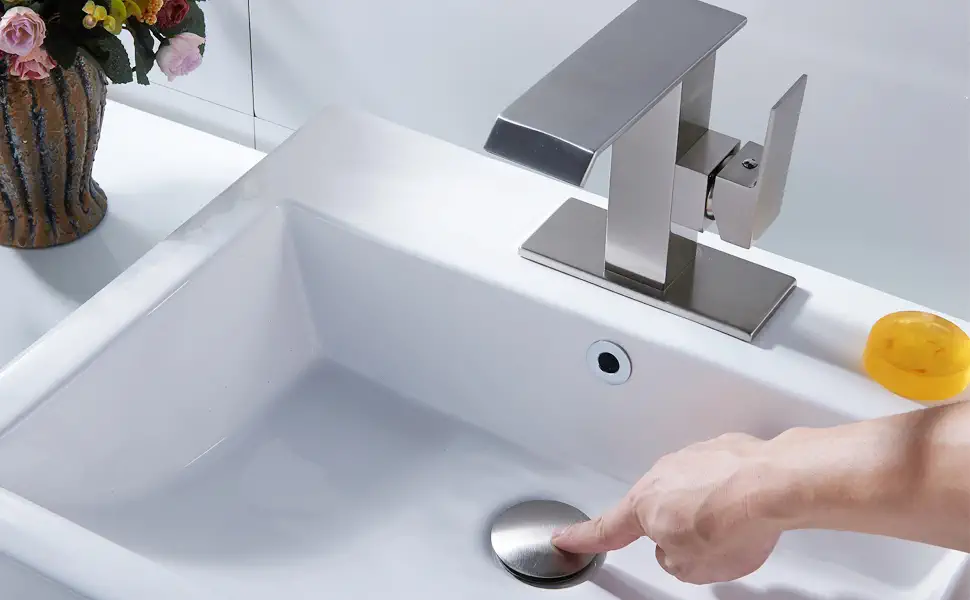
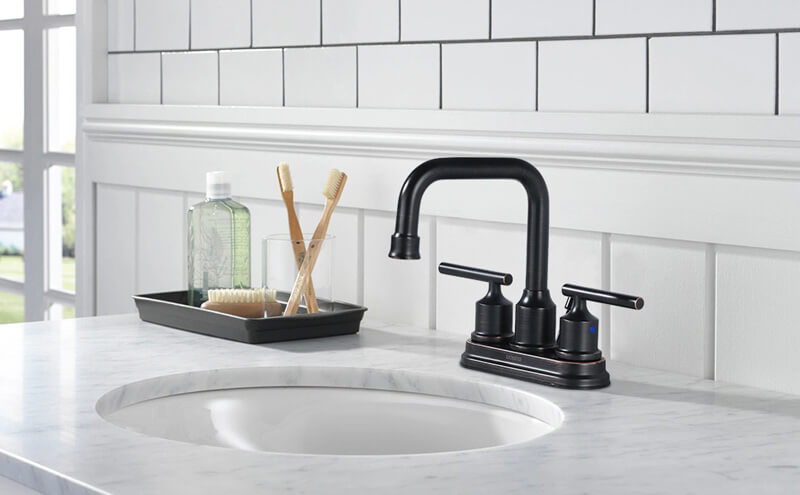
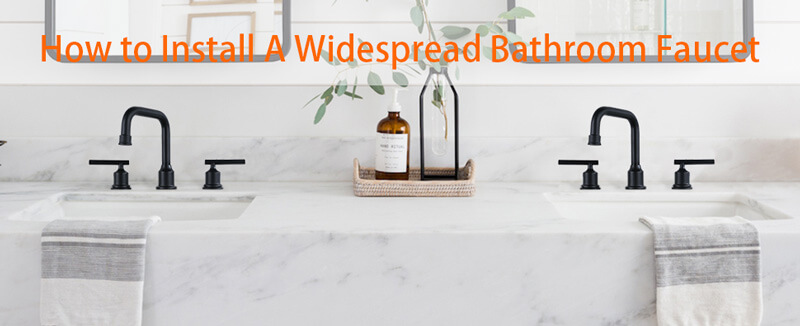
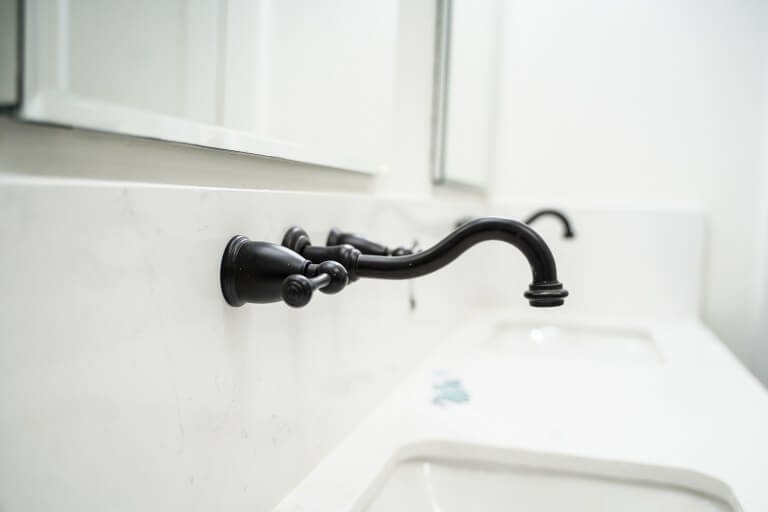
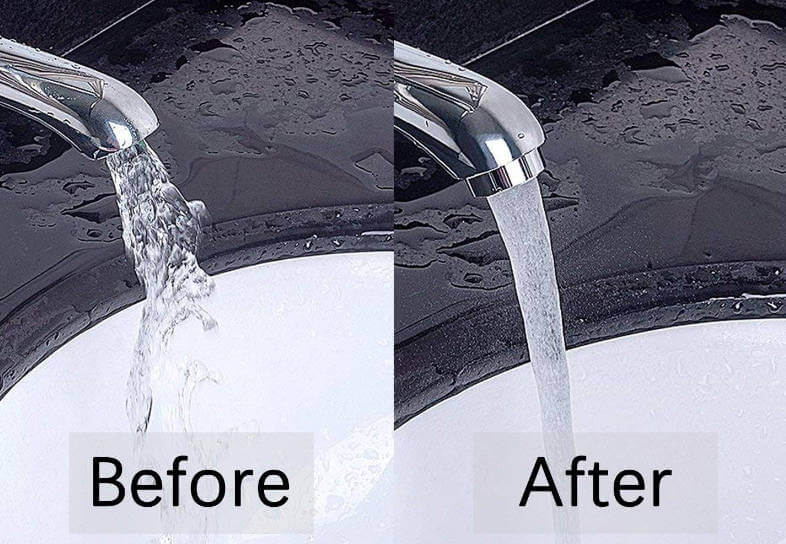
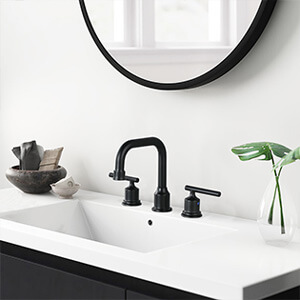
您好!Please sign in